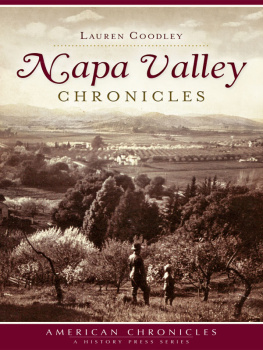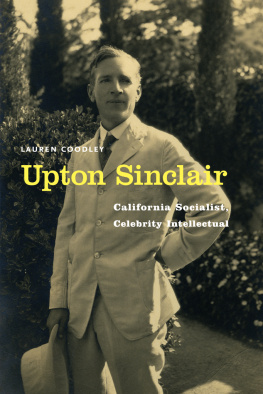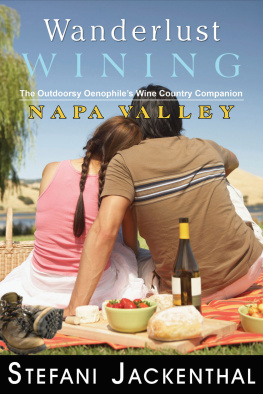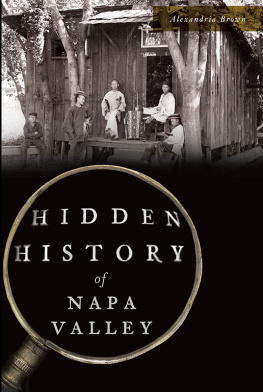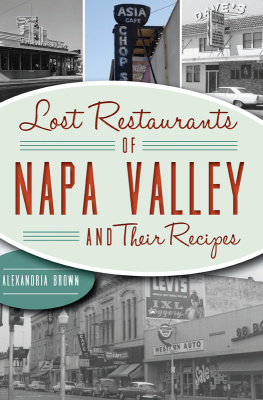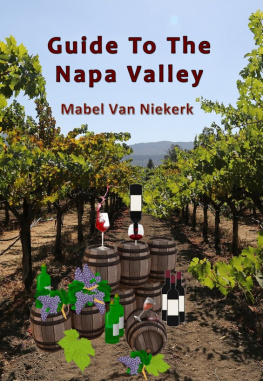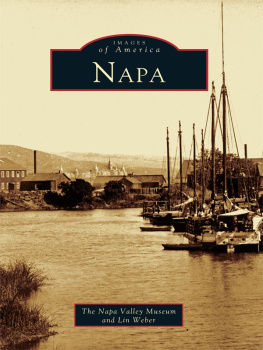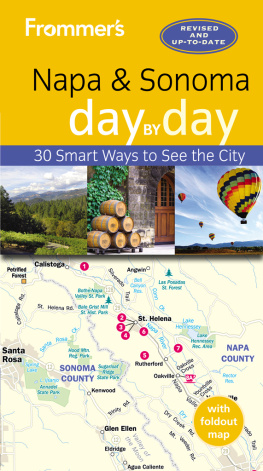

Published by The History Press
Charleston, SC 29403
www.historypress.net
Copyright 2013 by Lauren Coodley
All rights reserved
First published 2013
e-book edition 2013
Manufactured in the United States
ISBN 978.1.61423.958.1
Library of Congress CIP data applied for.
print edition ISBN 978.1.60949.926.6
Notice: The information in this book is true and complete to the best of our knowledge. It is offered without guarantee on the part of the author or The History Press. The author and The History Press disclaim all liability in connection with the use of this book.
All rights reserved. No part of this book may be reproduced or transmitted in any form whatsoever without prior written permission from the publisher except in the case of brief quotations embodied in critical articles and reviews.
CONTENTS
ACKNOWLEDGEMENTS
Many people in my community have assisted on these essays, contributing research, memories, ideas and suggestions. Cathy Mathews, whose father raised prunes on Monticello Road and worked at Basalt, has served as informant, reporter and commentator, and you will find her pithy insights throughout the book. Stephanie Grohs, who grew up in the West Park neighborhood, has helped me to imagine Napa as it was before I had ever been here. Together, we developed a unique class on the history of this region that was once taught at the community college. Stephanies research on the African American and Japanese presence in the Napa Valley has been immensely helpful to both me and other scholars, and she also appears in some of the stories in this volume.
Those many people who donated reminiscences or photographs are acknowledged in the notes at the end of the book. Each of the articles in this book has its own bibliography for you to peruse. I would like to particularly thank Peter Manasse, Nilan Kincaid, Napa Firefighters Museum, the Napa County Historical Society, the Merry Mariners, Carolyn Knieff Salazar, Liz Reyna, Maria Esparza, Rachel Friedman, Sheryl Collins, Betty Hopperstad, Barbara Mannering, Deb Jachens, Jana Martinez, Marilyn Warnock, Lorie Saxon and Roger Andrews. Friends who have supported my work deserve to be acknowledged: Anita Catlin, Tammy and Jay Rogers, Kenny Drost and Pat Dwyer, Gray Brechin, Pat Wagner and, finally, the two historians of home who have most influenced me: Joseph Amato and Carol Kammen.
My most significant collaborator has been Paula Amen Judah, who grew up on Hoffman Avenue. She is the co-author of the essay about Community Projects, Inc., and has edited many of the essays, which has improved them immensely. Her exquisite poem begins this collection. I cant begin to thank her enough for her clarity, charity and impeccable taste.
I want to thank Connie Anderson and the staff of Napa Valley Marketplace for publishing my work over these many years. Thanks also to Aubrie Koenig, my editor at The History Press, for her faith in my project. Appreciations to those who assisted me in creating this manuscript: Lauren Ellsworth, Beth Schultz, Melissa May and, most of all, Adrianna Schwartz.
I work in the past, but I live in the present, thanks to my beautiful grandsons who share this time and place with me and their parents. I dedicate this book to the Vega family, who will live in a future in which I hope this book may serve as a guide and a remembrance.
BROWN STREET
by Paula Amen Judah
I want to walk
with my mother on
Brown Street again,
catch the breath of
clothy steam from
Moneys Cleaners,
hear the bell jingling
against the thick glass door as
patrons come and go,
see Mr. Money
counting out change
into the cupped hands of children
sent in to pick up
their fathers slacks.
I want to shade my
eyes against the
dark blue glint of
the tiles that line the
front of the Napa P.D.
where I posed
limp-shouldered
and alone in
my Easter bonnet,
chin and mouth
turned down, beneath
the shadow of my
sisters stiff refusal
to enter the picture.
I want to walk
with my mother on
Brown Street again,
visit the wide lobby
of the Plaza Hotel,
its overstuffed chairs with
their rough upholstery
sitting just inside the door,
the smell of bourbon
trailing over from
Novellis bar where
through a red straw
I tasted my first
Shirley Temple,
waiting in the muted light with dad
and the rest of the cops
for the bus to the 49er game.
I want to run
with my mother
across Brown Street
in the early morning,
skip up the stairs of
the old Court House
past suited lawyers
and punctual clerks
and men in overalls,
want to hear again
the echo of footsteps
on marble floors, the
sound of the bailiffs
steady All rise,
the strike of the
gavels authority
on dark wood.
I want to inhale the
air of that reliable
building and stop
to read the gold print
on the windowed doors:
Assessor
Superior Court
I want to walk with my mother
on Brown Street again.
PRELUDE TO PART I
Step back with me into 1920s Napa, a small town of many cultures, where Chinese immigrants moved out of quicksilver mines and into orchards and tanneries. They built the stone walls and bridges that you can still see throughout the valley. Napas Chinatown consisted of rows of fragile wood-frame dwellings located near what later became the parking lot of the Cinedome movie theater. Walking past these buildings in 1920, you could smell the incense from the Joss House and hear the hiss of the hot irons inside the Sam Yee Laundry on Main Street.
Napas Spanishtown was located among the streets named for some of the Californios who were given land grants by the Mexican government: Yount, Vallejo, Yajome and Juarez. Descendants of the Californios remained in these neighborhoods after the war with Mexico. Some married the indigenous people of the valley, the Meyank-mah. The men often worked as laborers, while many of their wives operated boardinghouses just north of downtown.
East Napa was home to a thriving Little Italy. Italians built houses with two kitchens, one in the basement and another on the upper floor where the women could cook when the river flooded. Dave Cavagnaro was the unofficial mayor of Little Italy. Cavagnaro organized the famous Fourth of July parades and spent three months every year traveling with the circus. Across from Cavagnaros hotel, Theresa Tamburelli and her husband ran the Depot restaurant. The Depot had been the cultural and political center of the towns thriving immigrant community of Italian laborers, men who lived at the Brooklyn and Roma Hotels and played bocce ball at the edge of the river. In 1930, while cooking for a visiting team of San Francisco baseball players, Mrs. Tamburelli ran out of pasta dough. Remembering her mothers resourceful cooking, she boiled up tiny dumplings of ravioli filling and called it malfatti.

Chinese children living in Napa, early twentieth century. Courtesy of Napa County Historical Society.
Next page
